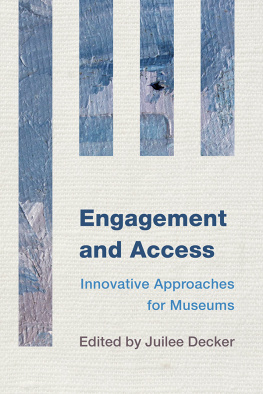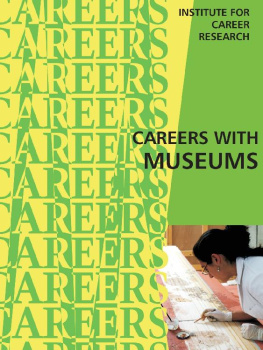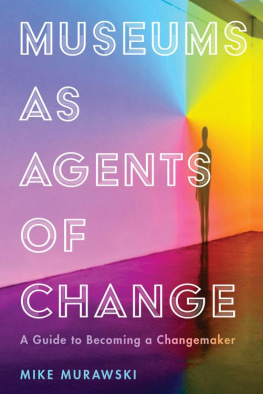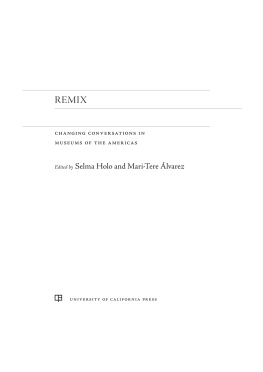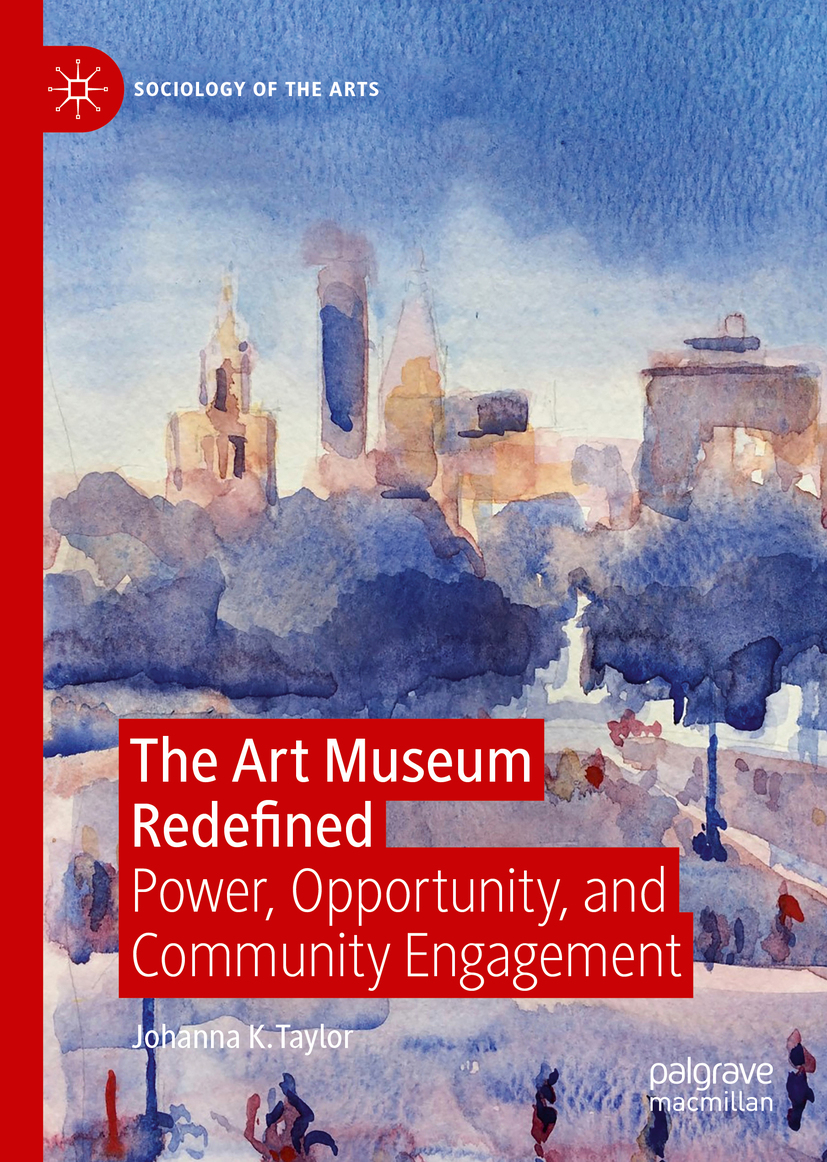Sociology of the Arts
Series Editors
Katherine Appleford
Kingston University, London, UK
Anna Goulding
University of Newcastle, Newcastle, UK
Dave OBrien
University of Edinburgh, Edinburgh, UK
Mark Taylor
University of Sheffield, Sheffield, UK
This series brings together academic work which considers the production and consumption of the arts, the social value of the arts, and analyses and critiques the impact and role of cultural policy and arts management. By exploring the ways in which the arts are produced and consumed, the series offers further understandings of social inequalities, power relationships and opportunities for social resistance and agency. It highlights the important relationship between individual, social and political attitudes, and offers significant insights into the ways in which the arts are developing and changing. Moreover, in a globalised society, the nature of arts production, consumption and policy making is increasingly cosmopolitan, and arts are an important means for building social networks, challenging political regimes, and reaffirming and subverting social values across the globe.
More information about this series at http://www.palgrave.com/gp/series/15469
Johanna K. Taylor
The Art Museum Redefined
Power, Opportunity, and Community Engagement
Johanna K. Taylor
Arizona State University, Tempe, AZ, USA
ISSN 2569-1414 e-ISSN 2569-1406
Sociology of the Arts
ISBN 978-3-030-21020-5 e-ISBN 978-3-030-21021-2
https://doi.org/10.1007/978-3-030-21021-2
The Editor(s) (if applicable) and The Author(s) 2020
This work is subject to copyright. All rights are solely and exclusively licensed by the Publisher, whether the whole or part of the material is concerned, specifically the rights of translation, reprinting, reuse of illustrations, recitation, broadcasting, reproduction on microfilms or in any other physical way, and transmission or information storage and retrieval, electronic adaptation, computer software, or by similar or dissimilar methodology now known or hereafter developed.
The use of general descriptive names, registered names, trademarks, service marks, etc. in this publication does not imply, even in the absence of a specific statement, that such names are exempt from the relevant protective laws and regulations and therefore free for general use.
The publisher, the authors and the editors are safe to assume that the advice and information in this book are believed to be true and accurate at the date of publication. Neither the publisher nor the authors or the editors give a warranty, express or implied, with respect to the material contained herein or for any errors or omissions that may have been made. The publisher remains neutral with regard to jurisdictional claims in published maps and institutional affiliations.
Cover image Anna Goulding, derived from Artem Vorobievs photograph of Union Square, New York
This Palgrave Macmillan imprint is published by the registered company Springer Nature Switzerland AG.
The registered company address is: Gewerbestrasse 11, 6330 Cham, Switzerland
Preface
Art museums can no longer just be encyclopedic archives of fine art objects documenting select histories. Today art museums are pulled in conflicting directions as they work to maintain relevance in the shifting social, economic, and political landscape that changes priorities among audiences, city officials, funders, and art world gatekeepers. This book addresses one way in which art museums are responding to these challenges. They cooperate directly with neighboring communities to build programs outside of museum walls that make the institution directly relevant to their neighbors daily lives.
The Queens Museum in New York Citys most globally diverse borough is the primary case study described. This art museum was an early leader in adopting socially engaged art practices in cooperation with local communities both in the museum and across its neighborhood of Corona. The book intermixes examples from the Queens Museum with other global cases to address the complexities of cooperation and collaboration uniting museums with diverse stakeholders, programming in public spaces, and the risks and opportunities in experimentation with new ways of working. The socially engaged turn in museums, socially engaged art, place, community engagement, cooperation, and equity and inclusion in museum practice are discussed. The Corona neighborhood is a microcosm of the world and the cooperative practices delineated in this book can be extrapolated to other global urban neighborhoods.
Understanding art museum community engagement from this locally grounded perspective is critical at a time when funding for art continues to be in crisis, and art itself is at risk of being consumed only by elite audiences with the cultural and economic capital required for access. At the same time art practice which engages communities is becoming more recognized by policymakers as an avenue to reach local groups, creating a moment of opportunity for practitioners to advocate for the impact of socially engaged art practice to increase funding and support. Programs make art an avenue for the social, economic, and political changes desired.
Intentional cooperation with communities can be a route to a new sustainable model for museums; their fates are mutually linked, intertwining museum and community. This book presents a critical analysis of the power and opportunity created in the implementation of cooperative art practices connecting art museums and their local communities by looking at the networks connecting art museums to residents, artists, community organizations, and policymakers. This book bridges the gap between cultural policy and art history literature on museums and socially engaged art with an analytical perspective that unites granular, contextual understanding of art museum community engaged initiatives with a ground level ethnography of how this museum-connected socially engaged art practice is experienced by artists, organizers, residents, funders, city officials, and others. The book will be of interest to both scholars and practitioners in art, city policy, and community development.
Johanna K. Taylor
Tempe, AZ
Contents
List of Figures
1. Art Museums and Community Cooperation
As I exit the train at 103rd Street in Corona and walk out onto the sunny, open air elevated platform, I hear fast paced music and I feel a sense of anticipation. I descend the metal stairs and exit the station into Corona Plaza where a few hundred people are gathered; some move among the tents of activities and local businesses set up along the perimeter, others talk and laugh, while children play together. A circle of people has formed in the middle of the plaza around the local performance group Danza Azteca Chichimeca who fill the space with the energy of their movements and the rapid drum beats of their music. The performers are dressed in elaborate traditional Aztec costumes adorned with long feathers and beads which jump with them as they dance, creating a blur of color and energy. It is hard not to move along with them as they perform traditional pre-Columbian movements that continue to be practiced across Mexico and by immigrants in the United States. Today the dance has evolved from its indigenous Mesoamerican roots to also embody a political call for civil rights and to decolonize contemporary cultural traditions (



